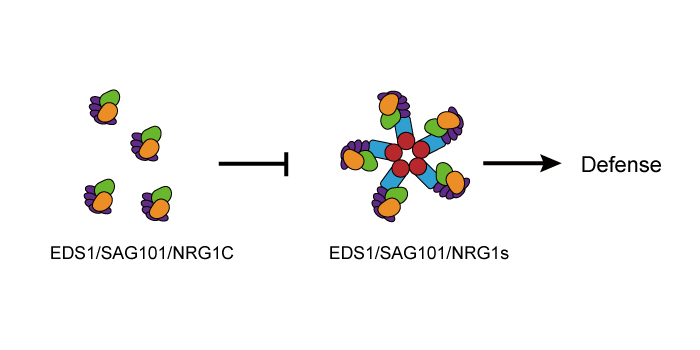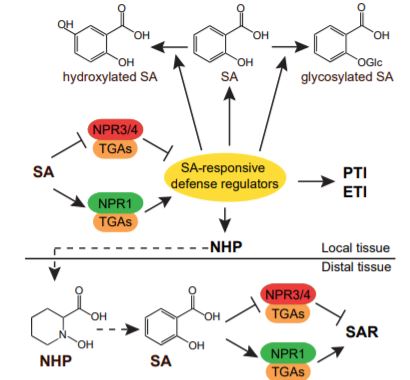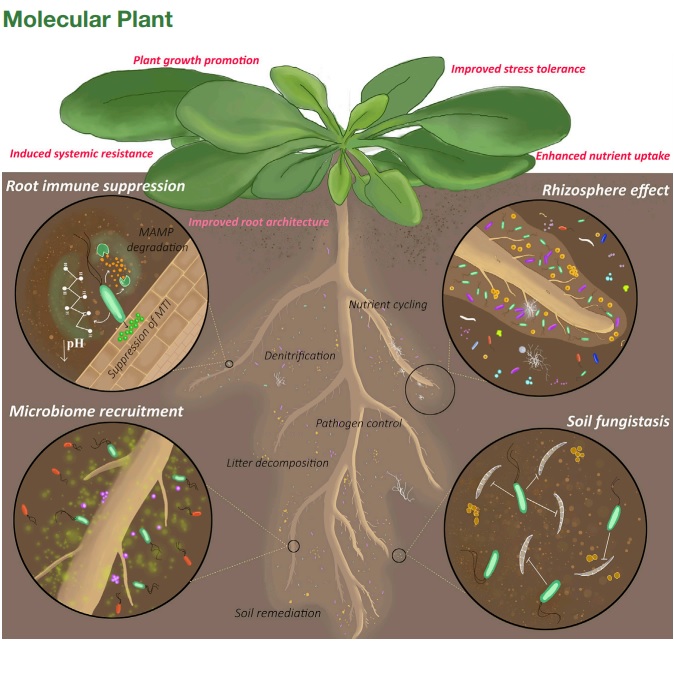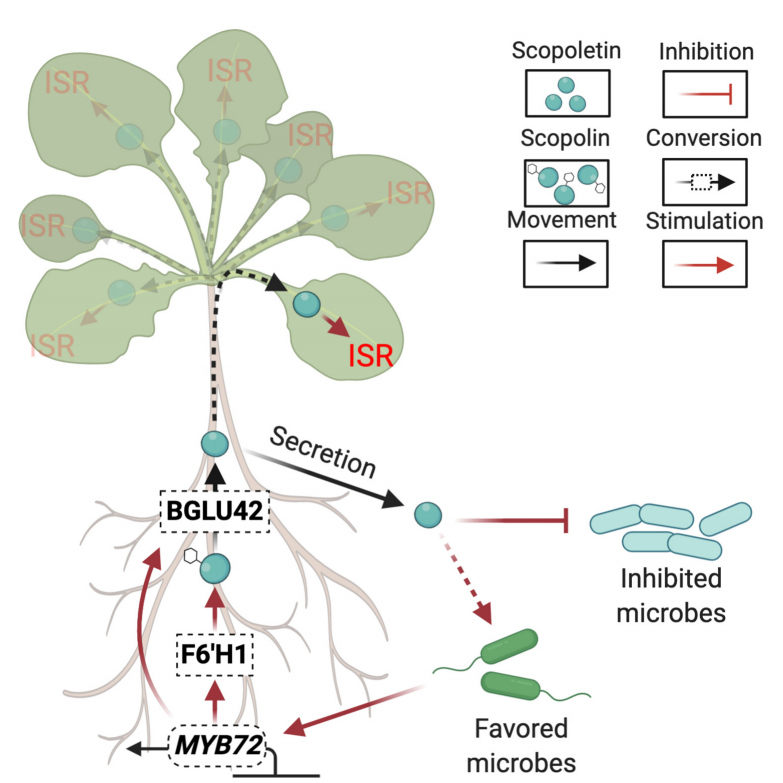
An N-terminally truncated NLR is functional
The Plant Cell: In a NutshellWu et al. uncover the unexpected role of the truncated NLR NRG1C in negatively regulating plant immunity by antagonizing its full-length NRG1 neighbors.
Background: Plants utilize sophisticated innate immune systems to fight against pathogens. Their genomes encode abundant immune receptors to detect…

Zones of Defense? SA Receptors Have it Under Control
Blog, Research, The Plant Cell, The Plant Cell: In BriefThe constant evolutionary arms race with pathogens has equipped plants with a layered immune system. As the first line of defense, membrane-localized pattern recognition receptors perceive microbe-associated molecular patterns and activate pattern-triggered immunity (PTI). In parallel, R proteins –…

Review. The soil-borne identity and microbiome-assisted agriculture: Looking back to the future (Molecular Plant)
Plant Science Research WeeklyBakker et al. begin their review of plant-soil microbiome concepts with a Lorentz Hiltner quote from 1904: “However, I am convinced that soil bacteriology will finally provide results that are not only of explanatory nature, but will also directly affect and determine agricultural practice… I would…

Review: Coumarin communication along the microbiome-root-shoot axis (Trends Plant Sci.)
Plant Science Research WeeklyAs the realm of microbiology expands, we see increasing ways in which eukaryotes depend on their microbiomes. For instance, in animals, the “microbiome-gut-brain axis” connects gut microbiota and the nervous system and influences a range of activities from digestion to mental health. Stassen et al.…

